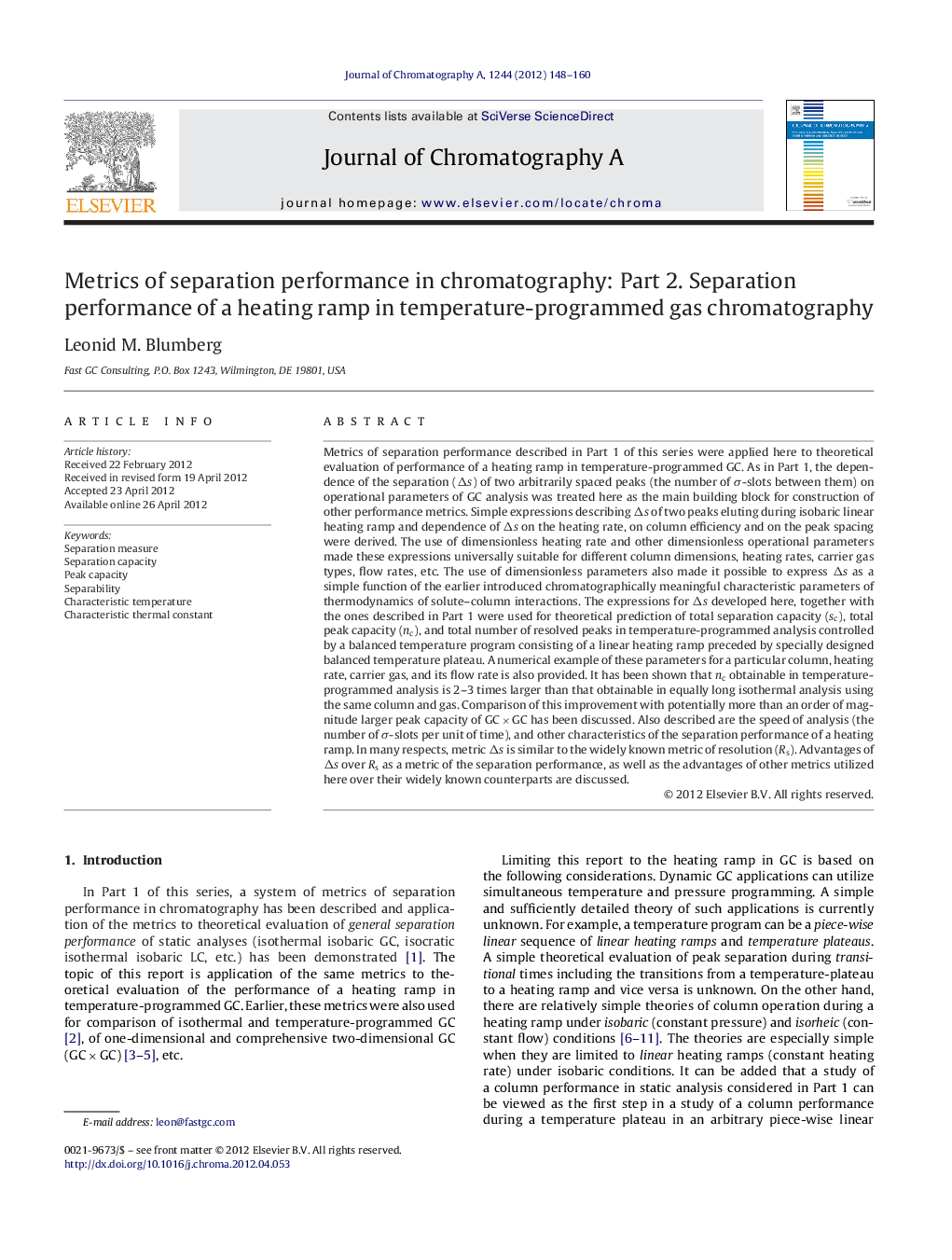| کد مقاله | کد نشریه | سال انتشار | مقاله انگلیسی | نسخه تمام متن |
|---|---|---|---|---|
| 1200690 | 1493681 | 2012 | 13 صفحه PDF | دانلود رایگان |

Metrics of separation performance described in Part 1 of this series were applied here to theoretical evaluation of performance of a heating ramp in temperature-programmed GC. As in Part 1, the dependence of the separation (Δs) of two arbitrarily spaced peaks (the number of σ-slots between them) on operational parameters of GC analysis was treated here as the main building block for construction of other performance metrics. Simple expressions describing Δs of two peaks eluting during isobaric linear heating ramp and dependence of Δs on the heating rate, on column efficiency and on the peak spacing were derived. The use of dimensionless heating rate and other dimensionless operational parameters made these expressions universally suitable for different column dimensions, heating rates, carrier gas types, flow rates, etc. The use of dimensionless parameters also made it possible to express Δs as a simple function of the earlier introduced chromatographically meaningful characteristic parameters of thermodynamics of solute–column interactions. The expressions for Δs developed here, together with the ones described in Part 1 were used for theoretical prediction of total separation capacity (sc), total peak capacity (nc), and total number of resolved peaks in temperature-programmed analysis controlled by a balanced temperature program consisting of a linear heating ramp preceded by specially designed balanced temperature plateau. A numerical example of these parameters for a particular column, heating rate, carrier gas, and its flow rate is also provided. It has been shown that nc obtainable in temperature-programmed analysis is 2–3 times larger than that obtainable in equally long isothermal analysis using the same column and gas. Comparison of this improvement with potentially more than an order of magnitude larger peak capacity of GC × GC has been discussed. Also described are the speed of analysis (the number of σ-slots per unit of time), and other characteristics of the separation performance of a heating ramp. In many respects, metric Δs is similar to the widely known metric of resolution (Rs). Advantages of Δs over Rs as a metric of the separation performance, as well as the advantages of other metrics utilized here over their widely known counterparts are discussed.
► Theoretical evaluation of performance of a heating ramp in temperature-programmed GC.
► Chromatographic parameters of temperature-dependence of solute–column interaction.
► Comparison of newly introduced metrics with their widely known counterparts.
► Quantitative comparison of performance of isothermal and temperature-programmed GC.
► Implications for comparative performance of one-dimensional and comprehensive two-dimensional GC (GC × GC).
Journal: Journal of Chromatography A - Volume 1244, 29 June 2012, Pages 148–160